More than just shell carriers, they’re an ammo-management system!
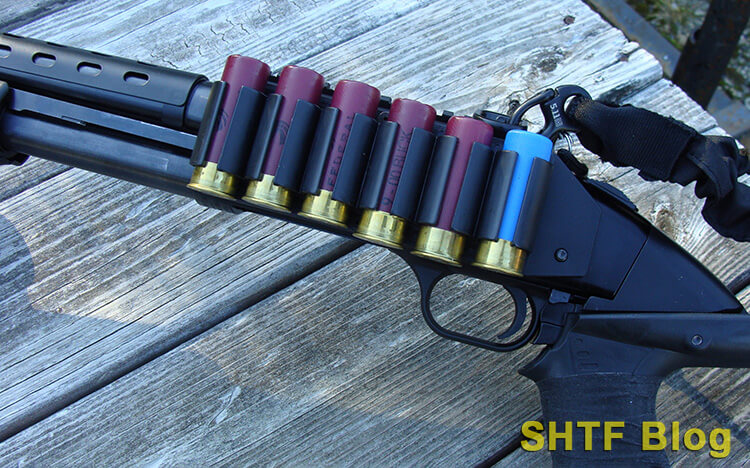
Most gun owners wouldn’t consider a basic inventory of firearms complete without at least one shotgun. Most avid shotgun shooters wouldn’t consider those firearms complete without shotgun shell holders.
The recent surge of striker-fired polymer pistols and ARs put shotguns on the back burner, or at least those geared toward defense. Funny how things tend to go full circle though. Double-action revolver sales are up again, and single-action pistols are making a comeback. From the looks of it, we’re also seeing renewed interest in so-called scatterguns.
No doubt some is attributable to new designs with distinctly tactical appearances. Kel Tec’s KSG and S&W’s new M&P 12 are two examples but, as many long-in-the-tooth law enforcement folks will attest, the less glamorous traditional designs are far from arcane relics.
Matter of fact, within the past few weeks several interesting videos have appeared on the Brownells site that cover basic pump shotguns guns for civilian defensive purposes. The first is the Self-Defense Shotgun and the second is Setting Up Your Self-Defense Shotgun.
Rather than mire viewers in tactical coolness, the emphasis is on practical features, either offered straight from the factory, or easily installed by their owners. Based on personal experience, I thought these videos were pretty much spot-on. Worth noting: although detachable-magazine shotguns are available, the versions presented in the videos were traditional tube-fed designs.
Quick Look at Defensive Shotguns
Two presumed negatives of the shotgun is limited range and capacity. Both are true to some extent, although slugs will arguably cover distances justifiable from a legal perspective. As for capacity, there was a time halfway around the globe when I would’ve given my teeth for a detachable-magazine pump gun.
Our adversaries were determined, and contact was typically close, so a shotgun had potential for stealthy maneuvers in the bush. Trouble was, those I could find were all configured as so-called riot guns with shorter tube-fed magazines. The whole idea was quickly scrapped but I may have failed to see the whole picture.
Later, I wound up shepherding an active LE shotgun program for a period long enough to encompass pretty much everything from bead-barreled police pumps through twin-magazine bullpups. Along the way my thinking changed as well.
There’s still much to be said about old-school pumps.
- For starters, like revolvers and traditional lever-action rifles, tube-fed shotguns are self-contained designs. No worries about lost mags (as well as their contents).
- Another advantage: a shotgun with a tubular-magazine shotgun is a shoot-and-replace system. As long as spare shells are readily accessible, they can be fed directly into the magazine, even if the gun is mounted to the shoulder.
Shoot two shells? Replace them with two more, fed using the support hand. If you learn to run the gun on your shoulder, and you can capitalize on opportunities to reload, it’ll never be out of action as long as spare shells are available – and accessible.
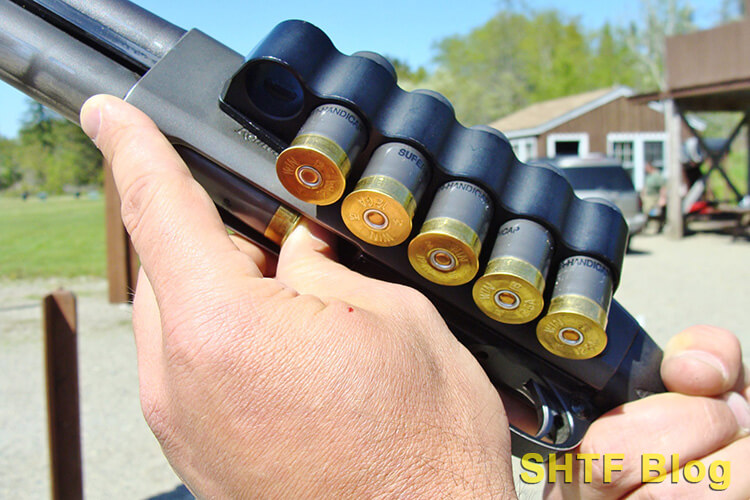
Then again, a shotgun like the KSG may not need any spare ammo thanks to its twin magazine tubes, containing seven apiece. However, it really isn’t the kind of gun you’ll see in an Iowa cornfield or Maryland duck blind (limit of 3 total shells by federal regs). The better role for these guns is defense.
Worth noting for those committed to full mastery of their firearms, although they’re still pump guns, the KSG manual of arms differs from traditional designs. After issuing KSGs to a squad of specialists, we pulled the plug on their further use of Remington Model 870s.
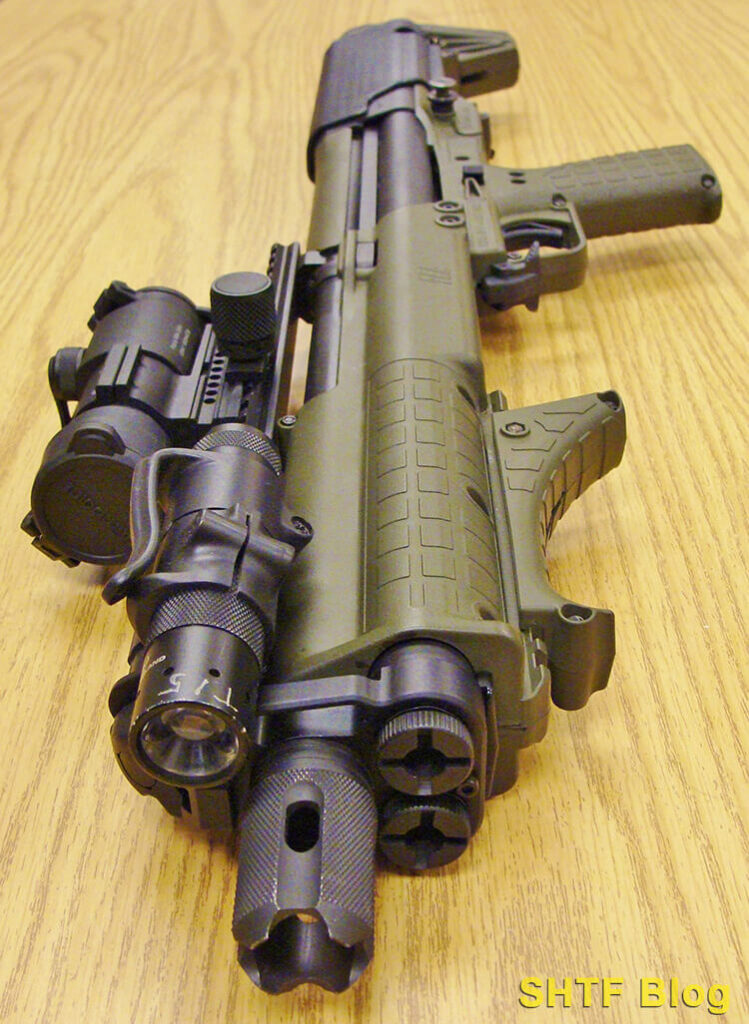
The more mundane pump guns or autoloading shotguns may not look as cool, but they can cover lots of bases. Using the M-870 as an example, a compact slug barrel can handle defense, and also fill a freezer with venison.
Unscrew the magazine cap, exchange if for a 28-inch vent-rib barrel, and you’ll have a bird gun. From there, it mostly boils down to management of ammunition whether slugs, buckshot, birdshot, or some combination thereof. These Remington 870-style shotguns are far more versatile. Swapping out barrels means it can either qualify as one of the common short-barreled shotguns or a longer bird gun.

Shotgun Ammo Management 1.0
The shotgun receives deserved praise for its ability to fire a variety of loads. Much less frequently mentioned are methods for their exchange which, from a defensive viewpoint, could involve a fast swap from a buckshot shell to a slug.
Using a M-870 as an example (could as easily be a Mossberg pump), some defense-minded shotgunners mount shell carriers to their receivers and fill ‘em with mixtures of buckshot and slugs. In theory at least, this strategy should cover most plausible scenarios. The popular 12 gauge defensive choice is a 00-buckshot shell containing 8-9 lead spherical “pellets.”
Effective range, depending on the gun and load, will max out at around 35–40 yards. More range (and punch) will require a switch to a slug. A common 12 gauge rifled-slug shell contains a one-ounce, .73-caliber lead bullet.
Although its rifled surface is mostly cosmetic, useful accuracy is possible from most smoothbore shotgun barrels to at least twice that distance. There’s little a plain Foster-type rifled-slug can’t handle inside 100 yards – assuming its readily accessible.

However, the logical first choice for defensive purposes is buckshot. Otherwise (assuming the option exists), why not just carry a rifle? Plus, there’s the spare slugs, reversed for identification. Assuming you need to make a quick switch, what happens next?
If you’re thinking this over right now, you’re probably not alone. Suddenly, depending on the function of the shotgun, we could have a “situation.”
If the gun happens to be break-barrel design, simply open the action and switch shells. Better swap both though if it has two barrels and a single trigger. Otherwise, the firing order may reset to fire the wrong load.
What about a preloaded pump? Defensively, the nod goes to a detachable-magazine design, or a twin-tubed tactical version with a selector (more shortly). Meanwhile, let’s stick with the standard designs.
Ammo Management 2.0
A fairly common “carry condition” for LE shotguns combines a loaded magazine with an empty chamber – which accounts for the attention-getting slide-rack that will hopefully restore order. It was SOP for our patrol staff, equipped exclusively with buckshot. Some other agencies and civilians use mixed magazines of buckshot and slugs, a seemingly good idea – until stress kicks in.
At that point, even without reloads, the chambered shell could be a guess. These concerns were eliminated via our KISS (Keep It Simple Stupid) approach, all buckshot. But our tactical assets had more options to include slugs and other exotic munitions. These loads could be exchanged on demand thanks to effective ammo management systems, correct techniques, and ongoing training.
That’s what it takes to prevent a bungled effort and possible stacked feed (two shells jammed together on the shell-lifter); fixable, but tricky under pressure.
Before moving on to shotgun shell holders, here’s a simplified buckshot-to-slug technique, best used with extended magazines. Employ the above empty-chamber carry-condition, but don’t fully load the magazine tube. Instead, save room for one additional shell. If the need for a slug arises, thumb it into the magazine before racking the slide. If you have a second shell and time permits, you can even top off the tube (the right shell holder helps).
Already a shell in the chamber? Yep, now things are more complicated, details for a separate article. Another possible twist: Is the object in your hand actually a shell? We (my cadre) were sticklers about ammo management systems. Some other agencies, not so much.
Items we saw headed for tubular magazines included butane lighters, Lifesavers, Chap-sticks, and backward shells (have fun), all of which came from pockets. These problems appeared most often in low light. They also disappeared through the use of suitable shell holders.
Shotgun Shell Holders
The list is for the most part a KISS version. Not covered are devices intended for high-speed gamesmanship. The gun-mounted “Match Savers” used for 3-Gun permit the lightning-fast reload of a single shell. The belt-worn, multi-shell, open-top caddies are nearly as quick.
However, the better general-purpose choice is a field-worthy system combining shell retention with protection from the elements. Comfort is also worth considering (especially if seated). Shotgunners already into the tactical world already have preferences to include Molle gear and tactical vests.
Since the slant here is toward plain-Jane guns, the most “tactical” system you’ll see is a side-saddle.
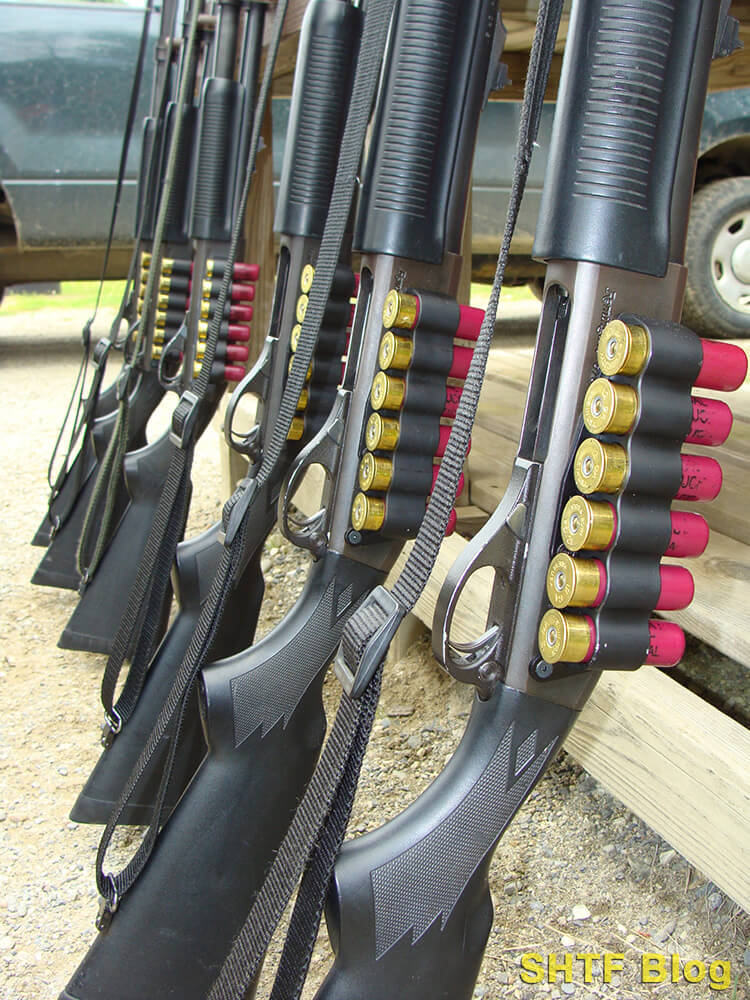
1 – Side-Saddle Carriers
These systems are sold to fit the receivers of popular repeating shotguns such as Remington Model 870s and Mossberg 500 pumps. Offered in various capacities, they locate reloads at the shooter’s fingertips, while consolidating shells into a useful grab & go firearm.
We equipped all of our agency’s extended-magazine M-870s with sturdy 6-shell aluminum Mesa Tactical units. This move freed up some belt space at the expense of additional weight. These come at a bit higher cost than some other units, but you get what you pay for. They can be purchased on Amazon, Brownells, Palmetto State Armory, or Optics Planet.
Like most others, they attach via two pass-through bolts that replace the receiver’s trigger pins. The Mesas won’t crack in cold weather, and they provide secure shell retention via replaceable O-rings.
Bonus – adding shells (weight) to the shotgun itself is 1 of 5 ways to reduce shotgun recoil.
Other shotgunners are happy with their polymer (or plastic) versions, some of which are QD designs. Main drawbacks (for all) are more complicated maintenance purposes, exposure of shells to the weather, and a noticeable increase in the overall weight – especially if combined with a magazine extension.
2 – Stock Sleeves
Elastic slip-on shell carriers are affordable and easy to install. They also eliminate the hassles of trigger-group servicing common to side-saddle systems.
- Brand New & Original! Hunting Gear Ready When You Are!
- Allen Buttstock Shotgun Shell Holder
- Designed with only the toughest, roughest users in mind
- Slides on the to butt of most shotguns in seconds
I’m less inclined to use a sleeve because of my background (with worries about a shoulder switch). I also don’t like the butt-heavy balance. In fact, nearly all gun-mounted systems result in a shotgun that handles more like a truck axle – even without an extended magazine.
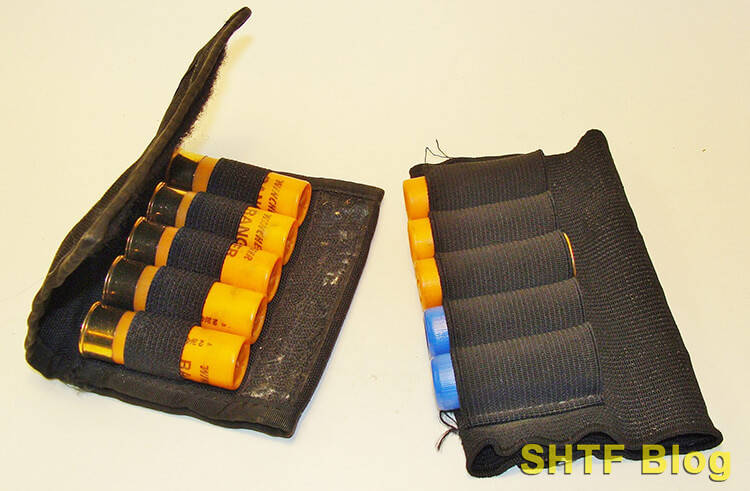
3 – Bandoleer Systems
Wear a high-count version and you may resemble Pancho Villa. Better eat your Wheaties too. Further concerns are access, weather exposure, lost shells, and little-to-no space for other items – like a sidearm. By contrast, the unobtrusive 5-shell flap-covered versions we adopted for duty use were a huge success.
They were compact and comfortable from any position and didn’t occupy much belt space. We only used one per patrol gun, but more will be doable for many folks. The closest version I can find now is Uncle Mike’s #88492. It’s supposedly designed to slip over a gun stock, but it should work on a belt. Actually, you can wear a stock-sleeve the same way.
4 – Dual-Shell Plastic Belt Holders
We’ve been clipping Safariland’s durable 080-12 plastic shell-holders on our belts for years. They’re a handy secondary shell source. The open top is reasonably secure but provides instantaneous access.
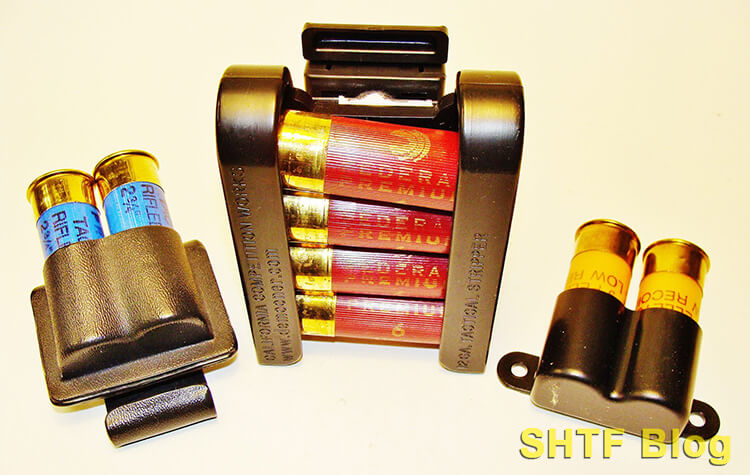
If the gun winds up empty, smokin’ fast reloads can be accomplished by grabbing both shells simultaneously.
These little gadgets are also easy to attach to belts. If you need a pair of slugs in a hurry, here’s a simple fix. These too can be purchased on Amazon, Brownells, Palmetto State Armory, and Optics Planet.
5 – Sporting Vests and Shell Pouches
Breaking outside the convention on-shotgun shell holders, there are lots of good options here between belt pouches, multi-box shell cases, and vests. The latter fall into two categories intended for claybirds and hunting. Most feature large pockets which can also manage different loads. Speed is normally less of a concern, so backward-shells are less of an issue.
The greater worry could be a shell mix-up involving an illegal load or the wrong gauge. Mix a 20 gauge shell in with your 12 gauge loads and the results could be disastrous. Easy fix though. Check the vest prior to shifting gears.
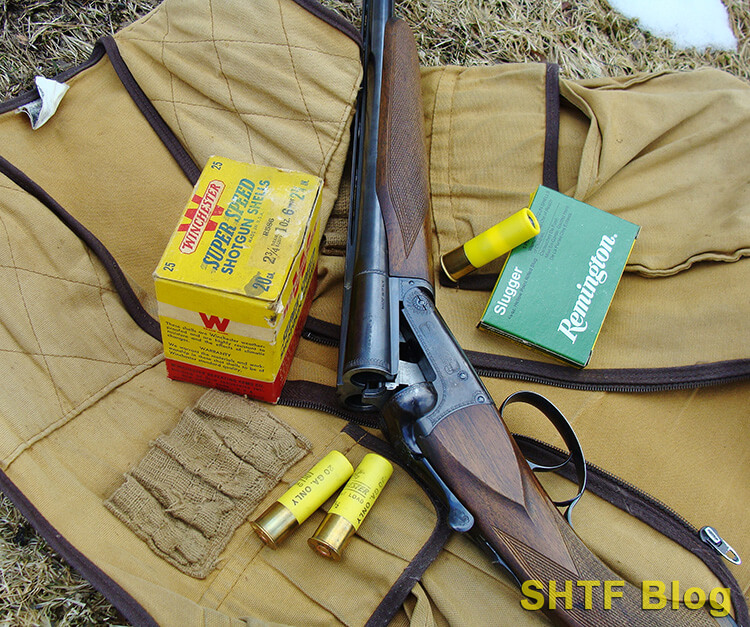
Which Works Best?
Given all of the available shotgun shell holders on the market, you might be stuck wondering what is the best choice for you. The answer often depends on the intended use.
Strictly Sporting
The claybird crowd tend to gravitate toward vests and pouches. Upland hunters wear game vests suitable for carrying shells and game birds. Waterfowl hunters may add a shell case for use in a boat or blind. They’re also seen on Sporting Clays courses (described as golf with a shotgun).
And some of us use all of the above, depending on the circumstances. Do an online search for your pastime of interest and all sorts of gear will appear.
Mostly Sporting – Possibly Defense
Sporting (hunting) shotgun use is often seasonal. If this fits your situation, assuming a compatible gun is on hand, you could install a magazine-extension during the off months. This might not be for everyone though. Extensions complicate barrel exchanges and maintenance, while adding additional weight. If you go this route check for reliable function.
A misaligned extension can jam the follower. If reconversion to sporting mode is probable, the easier and more affordable option is a stock-sleeve or independent system.

Probably Just Defense
Actually, a double-gun isn’t a bad home-defense choice, and some are made expressly for this purpose. But, of course, even a basic pump or autoloader can double its capacity. For more, beyond a magazine extension, it’s the side-saddle option.
If you sling the gun conventionally on your shoulder, check the proximity of primers to hard-cornered items on a belt – which could include a handgun. Or see below…
Strictly Defense
Here’s an ideal role for a shotgun with a detachable magazine. You can load one in a hurry, and easily unload, using procedures not too dissimilar from today’s popular semiautomatic pistols. Segregation of loads, or exchanges – as in buckshot to slugs – is also greatly simplified. To help tell them apart in low light, consider a tactile ID like a piece of skateboard tape on the slug mags.
Or just spring for a dual-magazine shotgun and call it good. Go this route and you’ll need a sighting system, meaning the project won’t be cheap. My experience is limited to the aforementioned KSGs. These futuristic looking pumps allow selection of the magazines, each of which can hold seven shells.
Ours were exclusively “less-lethal” kinetic or distraction loads, segregated within the KSG’s twin tubes. Others could employ the same strategy using buckshot and slugs. Set the selector to the default choice and you’re ready for an instant switch.
As for spare shells, the fourteen in the KSG will hopefully suffice. If not, supposedly the latest S&W M&P 12 will hold 22 Mini-shells. That oughta do it.
Parting Shots
The above choices are really just the tip of the iceberg. I’m betting others into shotguns have different lists of favorites that work well. But, since it was impossible to try them all, I went with those that worked well for me during hands-on use.
Nowadays, I find myself using more game vests and belt-hung shell pouches than anything, the latter during informal claybird shoots. However, I still use those handy flap-covered bandoleers, sometimes with a dual-shell clip-on thingy.
One thing that hasn’t changed is annoyance of a bunch of 12-gauge shells stuffed into pockets. For defensive purposes they’re a liability. Fortunately, many practical alternatives are still fairly inexpensive.
Want to learn more about shotguns? Steve Markwith is also the author of Shotguns: A Comprehensive Guide.

